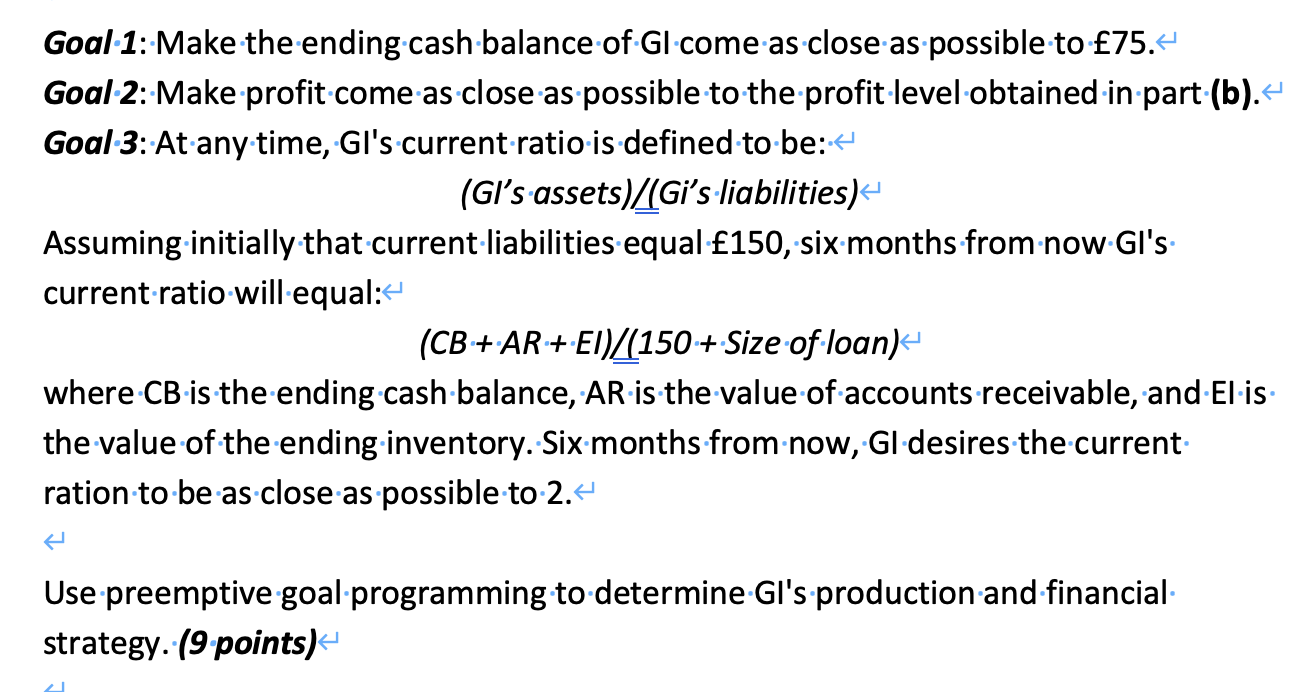Answered step by step
Verified Expert Solution
Question
1 Approved Answer
Good Intentions ( GI ) company produces two products, which it sells on both a cash and credit basis. Revenues from credit sales will not
Good IntentionsGI company produces two products, which it sells on both a cash and credit basis. Revenues from credit sales will not have been received but are included in determining profit earned during the current sixmonth period. Sales during the next six months can be made either from units produced during the next six months or from the beginning inventory. Relevant information about products one and two is as follows.
During the next six months, at most units of product type can be sold on a cash basis, and at most units of product can be sold on a credit basis. It costs to produce each unit of product type and each sells for A credit sale of a unit of product yields less profit than a cash sale because of delays in receiving payment Two hours of production time are needed to produce each unit of product At the beginning of the sixmonth period, units of product are in the inventory.
During the next six months, at most units of product type can be sold on a cash basis, and at most units of product type can be sold on a credit basis. It costs to produce each unit of product type and each sells for A credit sale of a unit of product type yields less profit than a cash sale. Four hours of production time are needed to produce each unit of product type At the beginning of the sixmonth period, units of product type are in the inventory.
During the next six months, GI has hours for production available. At the end of the next six months, GI incurs a holding cost on the value of ending inventory measured relative to production cost An opportunity cost of is also assessed against any cash on hand at the end of the sixmonth period.
a Formulate and solve a linear programming model that yields GI's maximum profit during the next six months. What is GI's ending inventory position? Assuming an initial cash balance of pounds, what is GI's ending cash balance?
b Since an ending inventory and cash position of is undesirable for ongoing operations GI is considering other options. At the beginning of the sixmonth period, GI can obtain a loan secured by ending inventory that incurs an interest cost equal to of the value of the loan. The maximum value of the loan is of the value of the ending inventory. The loan will be repaid one year from now. GI has the following goals listed in order of priority:
Goal : Make thGoal: Make the ending cash balance of come as close as possible to
Goal: Make profit come as close as possible to the profit level obtained in part b
Goal: At any time, GI's current ratio is defined to be:
GIs assetsGis liabilities
Assuming initially that current liabilities equal six months from now Gls
current ratio will equal:
where is the ending cash balance, is the value of accounts receivable, and is
the value of the ending inventory. Six months from now, Gl desires the current
ration to be as close as possible to
Use preemptive goal programming to determine Gls production and financial
strategy. points

Step by Step Solution
There are 3 Steps involved in it
Step: 1

Get Instant Access to Expert-Tailored Solutions
See step-by-step solutions with expert insights and AI powered tools for academic success
Step: 2

Step: 3

Ace Your Homework with AI
Get the answers you need in no time with our AI-driven, step-by-step assistance
Get Started


